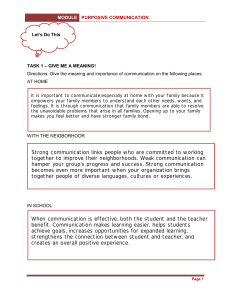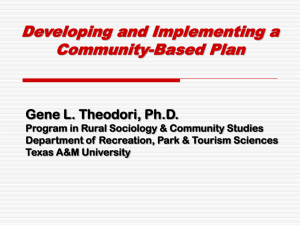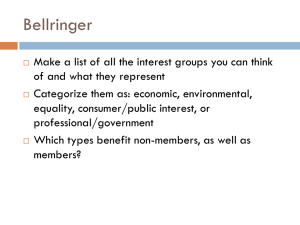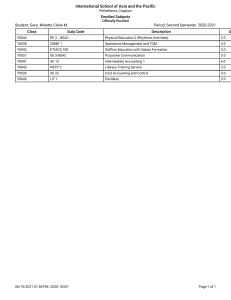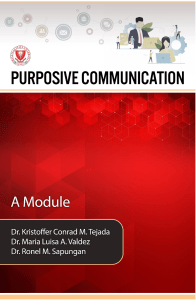What is Purposive Communication? Skills & Outputs
advertisement
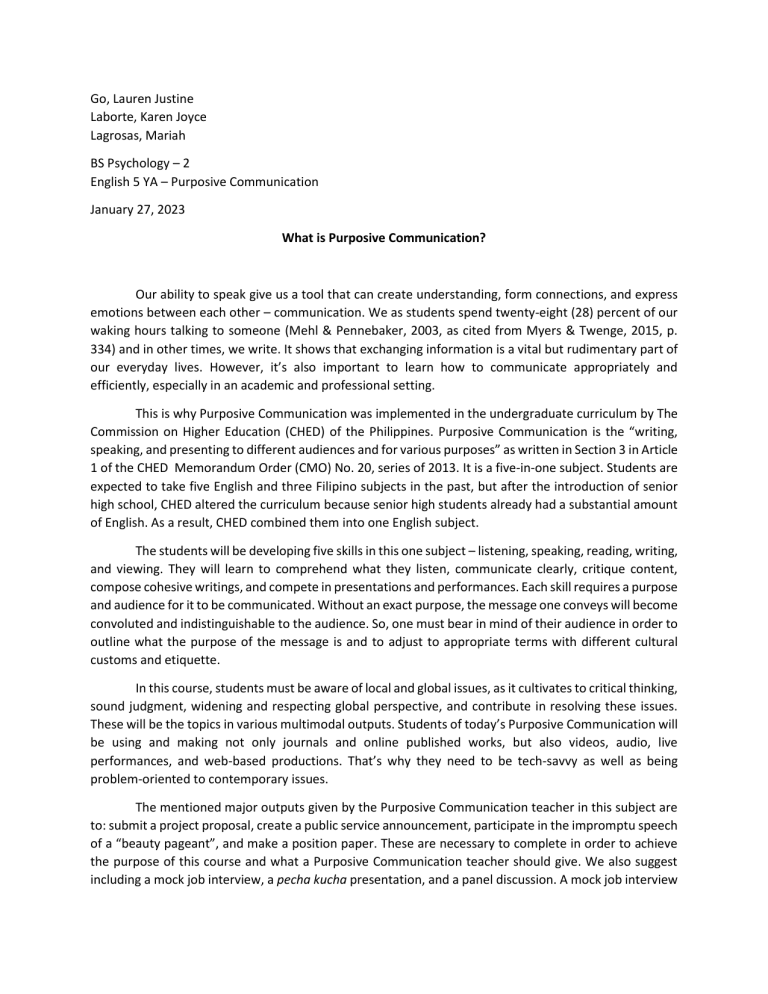
Go, Lauren Justine Laborte, Karen Joyce Lagrosas, Mariah BS Psychology – 2 English 5 YA – Purposive Communication January 27, 2023 What is Purposive Communication? Our ability to speak give us a tool that can create understanding, form connections, and express emotions between each other – communication. We as students spend twenty-eight (28) percent of our waking hours talking to someone (Mehl & Pennebaker, 2003, as cited from Myers & Twenge, 2015, p. 334) and in other times, we write. It shows that exchanging information is a vital but rudimentary part of our everyday lives. However, it’s also important to learn how to communicate appropriately and efficiently, especially in an academic and professional setting. This is why Purposive Communication was implemented in the undergraduate curriculum by The Commission on Higher Education (CHED) of the Philippines. Purposive Communication is the “writing, speaking, and presenting to different audiences and for various purposes” as written in Section 3 in Article 1 of the CHED Memorandum Order (CMO) No. 20, series of 2013. It is a five-in-one subject. Students are expected to take five English and three Filipino subjects in the past, but after the introduction of senior high school, CHED altered the curriculum because senior high students already had a substantial amount of English. As a result, CHED combined them into one English subject. The students will be developing five skills in this one subject – listening, speaking, reading, writing, and viewing. They will learn to comprehend what they listen, communicate clearly, critique content, compose cohesive writings, and compete in presentations and performances. Each skill requires a purpose and audience for it to be communicated. Without an exact purpose, the message one conveys will become convoluted and indistinguishable to the audience. So, one must bear in mind of their audience in order to outline what the purpose of the message is and to adjust to appropriate terms with different cultural customs and etiquette. In this course, students must be aware of local and global issues, as it cultivates to critical thinking, sound judgment, widening and respecting global perspective, and contribute in resolving these issues. These will be the topics in various multimodal outputs. Students of today’s Purposive Communication will be using and making not only journals and online published works, but also videos, audio, live performances, and web-based productions. That’s why they need to be tech-savvy as well as being problem-oriented to contemporary issues. The mentioned major outputs given by the Purposive Communication teacher in this subject are to: submit a project proposal, create a public service announcement, participate in the impromptu speech of a “beauty pageant”, and make a position paper. These are necessary to complete in order to achieve the purpose of this course and what a Purposive Communication teacher should give. We also suggest including a mock job interview, a pecha kucha presentation, and a panel discussion. A mock job interview will effectively ask and answer only necessary information, a pecha kucha presentation will give straightforward, quick information every twenty seconds per slide to the audience, and a panel discussion will provide value and insight of a topic between students. All of these activities challenge and motivate the students to creatively showcase their skills in communication. In summary, Purposive Communication develops students’ competence in communication between the topic and awareness of intercultural issues. The seven characteristics of this subject are: being a five-in-one subject, developing five communication skills, purpose-driven, audience-oriented, being aware of local and global issues, being multimodal subject, and requiring one to be tech-savvy. A Purposive Communication teacher should give activities that achieves the purpose of the course while challenging them to make creative, multimodal outputs. Reference: Myers, D., & Twenge, J. (2015). Social Psychology (12th ed.). McGraw Hill.


